Rescue Party
Robin Williams—no, not that Robin Williams—paints sulky, introspective adolescents. Her figures are waiting to emerge from underneath snowball beards, oversized hats, and heavy party dresses. These costumes may be fantastic, but the paintings suggest that what they've hidden is more amazing.
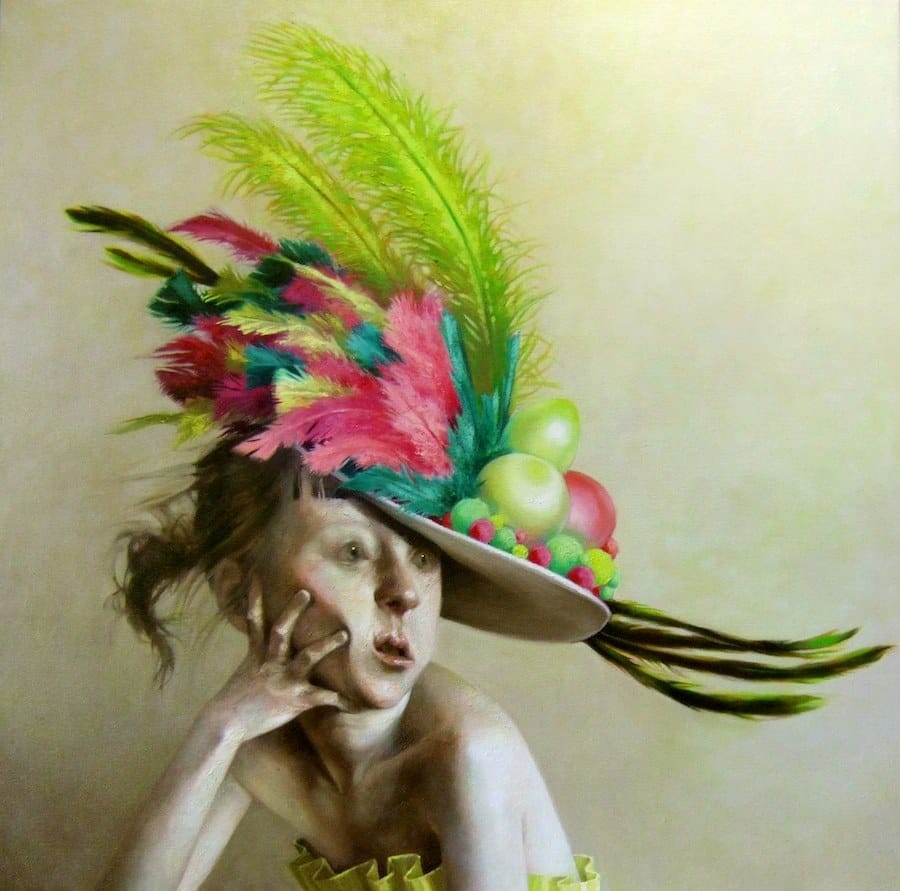
Interview by Nicole Pasulka
How do you come up with the scenarios in your work?
Sometimes I begin with a concept. Other times I simply want to paint a specific object or try a new technique and the concept is built around that impulse. Other times I work very intuitively. However an idea starts, the scenarios are usually a synthesis of my experiences and fears. The work is about young adulthood and how my generation is attempting to mitigate challenges. I paint adolescents because they embody that awkward “I’m-not quite-a-grown-up” feeling that I think a lot of my peers are experiencing. The scenarios are examples of those feelings of uncertainty, grief, expectation, and hope that young adults go through. There are kids overwhelmed by their own costuming, or stranded somewhere in an inner tube. Maybe they’re engaged in some sort of antiquated task, like pumping water or collecting firewood, because it’s what worked for past generations. I’m not exactly sure how the scenarios occur to me. They just make sense on a gut level. Continue reading ↓
Robin Williams’s “Rescue Party” recently closed at PPOW Gallery in New York. All images used with permission, © copyright the artist, all rights reserved.



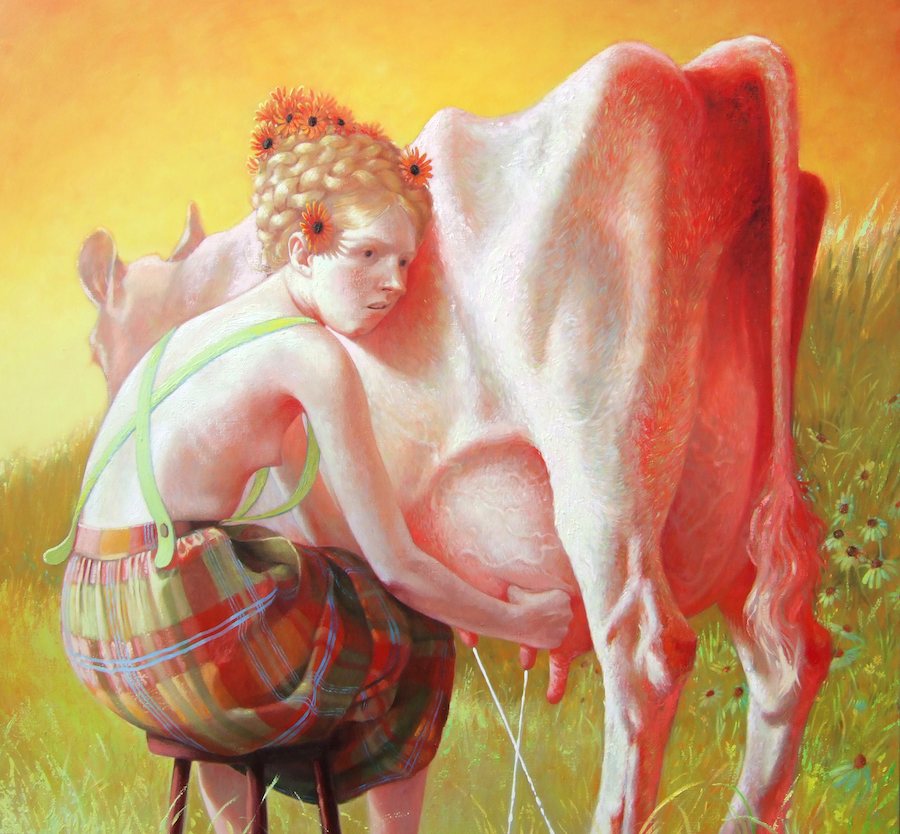
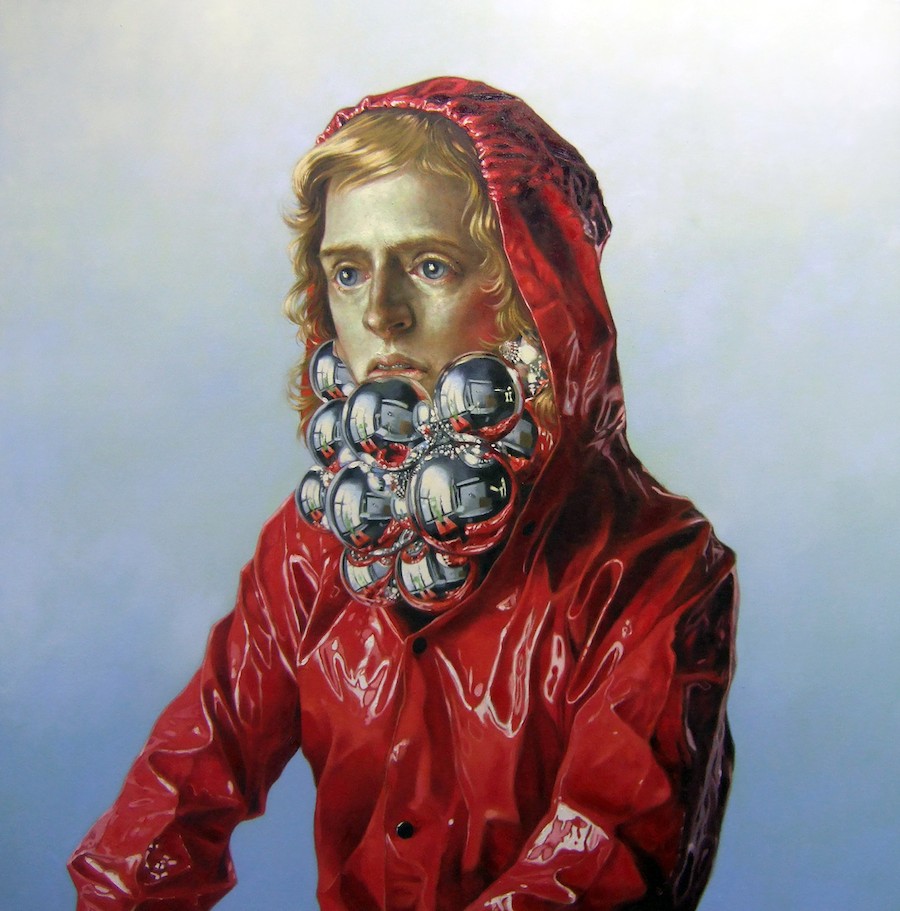

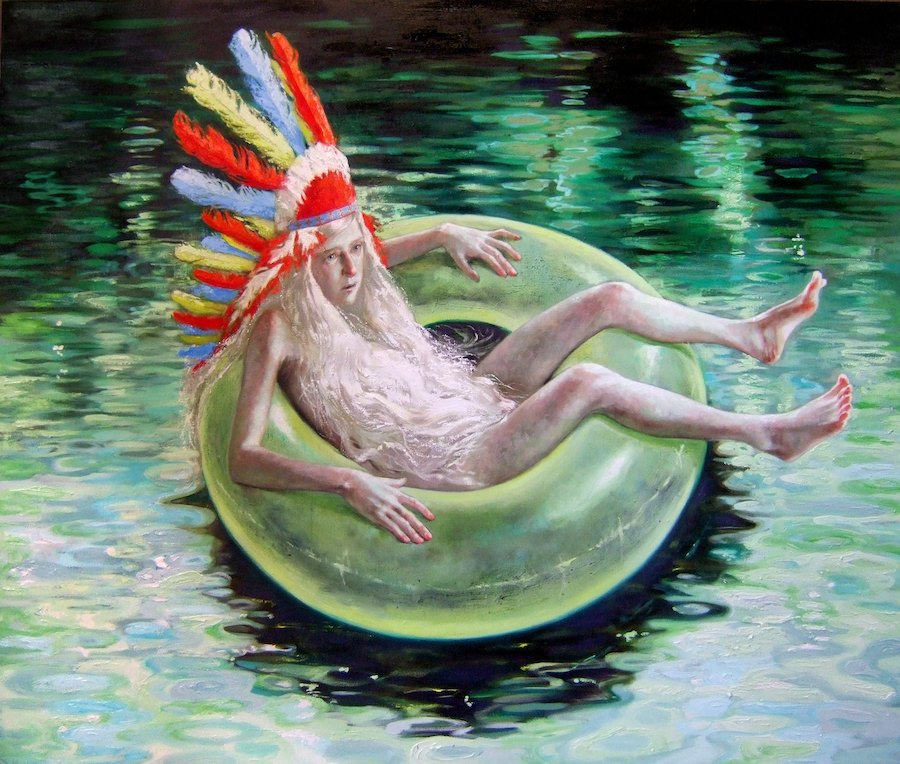
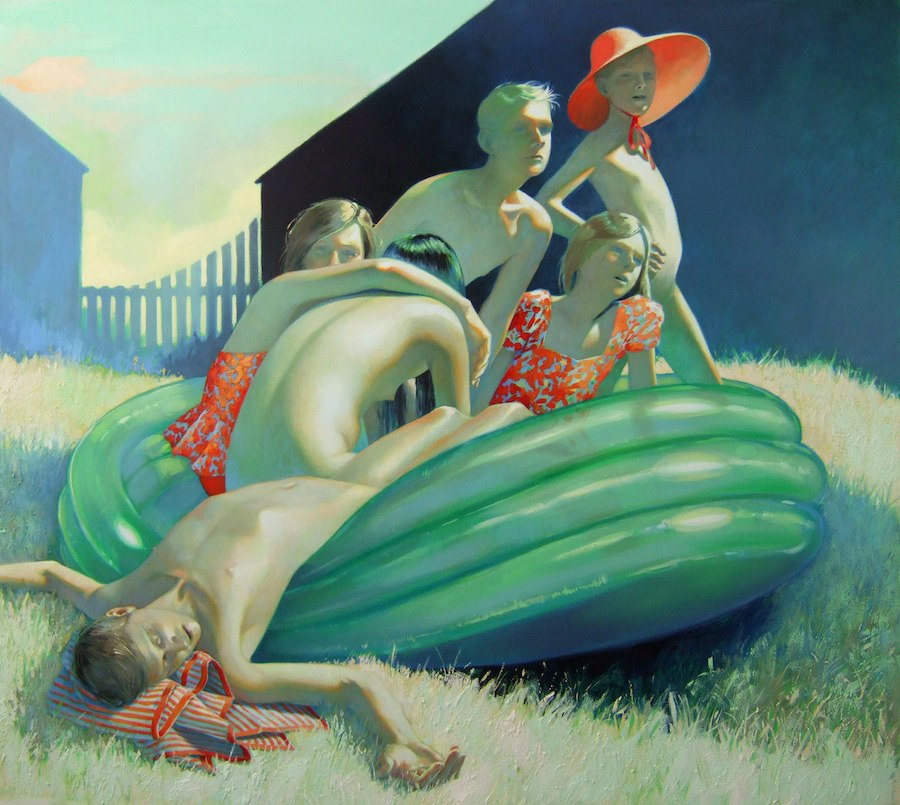
Interview continued
Do you use models?
I do use models. Mostly I use myself. But I also use my friends, boyfriend, and family. I always adjust proportions, features, and body types into what I want. I also use a lot of found images. If I run across a face that I love in a magazine or a Velasquez painting, I’ll borrow some features or an expression. I’m a scavenger.
And then what’s your process? I heard you make these headpieces…
I do build most of the costuming. It’s a nice way to break up the painting process. Sometimes I like extrapolating from a found image—like making fantasy cabbage in Cabbage Patch. But other times, I really appreciate having a concrete reference that I can get a ton of information out of. I also enjoy building something tactile from time to time. But I usually don’t keep the objects around as relics. They tend to get deconstructed and reincarnated into another prop later on. I kept the Tired Prince beard, though. I felt like it would make a good hat for a snowball fight.
Otherwise I develop a sketch and mostly work from photographs off of my computer. I don’t even print them out. As a result, my computer is covered in paint. I use Photoshop a lot, too, when I’m developing the color for a piece or if I want to play around with the composition in the middle of the painting process. This saves me time and paint. But there are plenty of instances when I’ll just go at a painting with pallet knives and cake icing tools until it works.
The subjects seem young, and uncertain. Is this a personal reference to your experiences?
The paintings are very personal. Not in any sort of literal sense. I’ve never actually milked a cow. But I feel very personally connected with what the subjects are going through in the work.
Are you sick of being asked questions like that?
People are always asking me, Why kids? And I’m not sick of being asked. But I don’t know if I have a great answer. It just fit for where I was at the time. It won’t be kids forever. Also every time I make a new painting and put it on my website, my parents email me and ask if they seriously messed me up as a child. If putting me in art lessons seriously messed me up, then I guess they did, ha! But seriously, they have always been very supportive.
In a lot of your work, childhood objects—balloons, gum, even dresses—seem to be suffocating or trapping these children. Are these representations of stressful or uncertain situations, or is that too literal an interpretation?
In a way I guess. It’s more about putting on a certain type of ornamentation or a persona that the figure hopes will make them feel more whole. They usually look a bit disappointed with the result. It tends to blot them out more than reveal who they are. It’s kind of about becoming something for the sake of becoming something rather than learning to know yourself. Or becoming something because you don’t realize that knowing yourself is an option.
What are you working on now? Are the images and subjects similar? Do you have new or different concerns?
Ahh! I’m just getting started on a new body of work. Women are coming into play as well as children…”women and children first.” I’m also looking at a lot of female artists. I’m looking at myself and asking what does it take to thrive and be heard as a female artist. I’m going to experiment with some new ways of laying down paint. I’m picking my cake icing tools back up and plan to play around with some pointillism. I’m all over the place right now. I’m getting a little tired of only painting my angsty teenage side. My show at PPOW is about to come down so I feel pretty free to head in a different direction. I’m excited.
